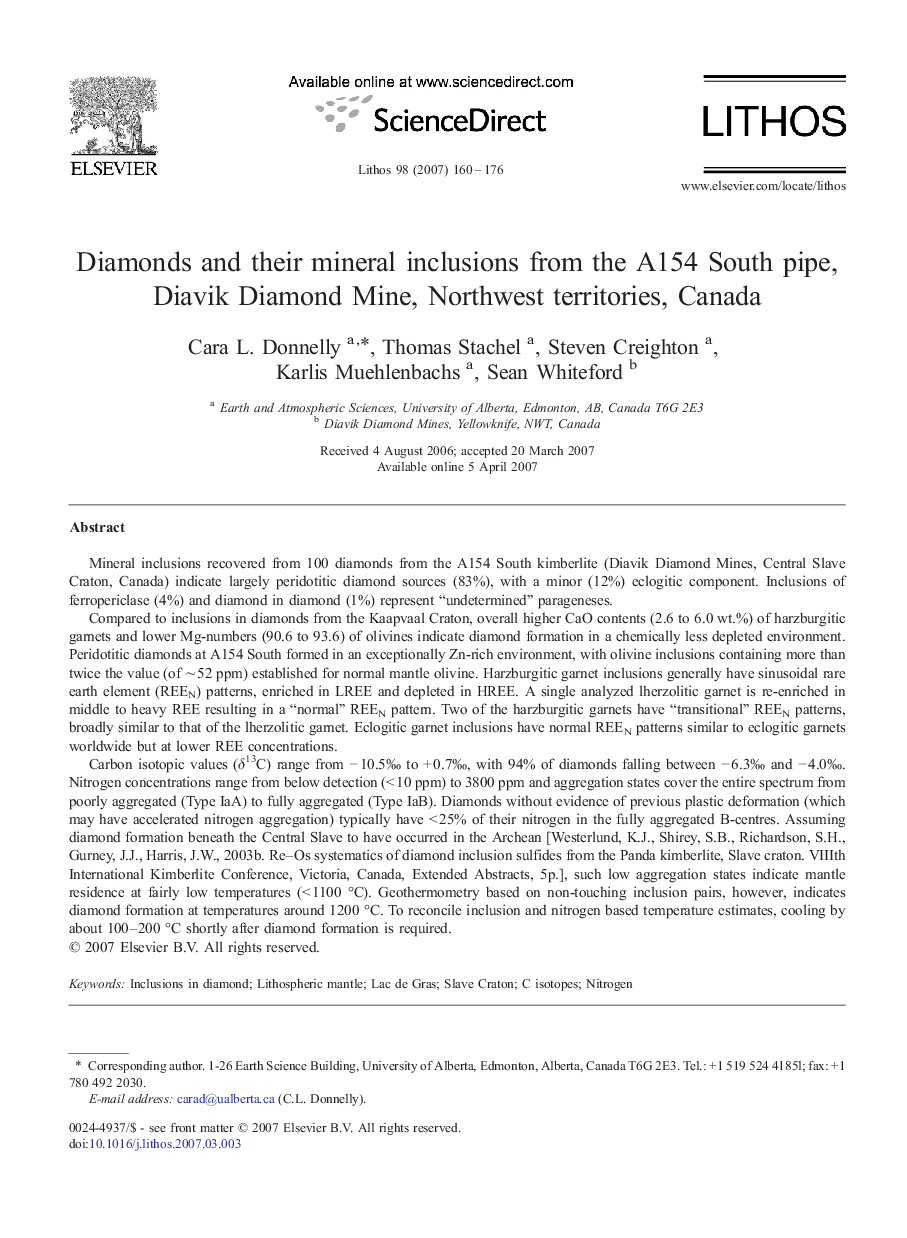| Article ID | Journal | Published Year | Pages | File Type |
|---|---|---|---|---|
| 4717774 | Lithos | 2007 | 17 Pages |
Mineral inclusions recovered from 100 diamonds from the A154 South kimberlite (Diavik Diamond Mines, Central Slave Craton, Canada) indicate largely peridotitic diamond sources (83%), with a minor (12%) eclogitic component. Inclusions of ferropericlase (4%) and diamond in diamond (1%) represent “undetermined” parageneses.Compared to inclusions in diamonds from the Kaapvaal Craton, overall higher CaO contents (2.6 to 6.0 wt.%) of harzburgitic garnets and lower Mg-numbers (90.6 to 93.6) of olivines indicate diamond formation in a chemically less depleted environment. Peridotitic diamonds at A154 South formed in an exceptionally Zn-rich environment, with olivine inclusions containing more than twice the value (of ∼ 52 ppm) established for normal mantle olivine. Harzburgitic garnet inclusions generally have sinusoidal rare earth element (REEN) patterns, enriched in LREE and depleted in HREE. A single analyzed lherzolitic garnet is re-enriched in middle to heavy REE resulting in a “normal” REEN pattern. Two of the harzburgitic garnets have “transitional” REEN patterns, broadly similar to that of the lherzolitic garnet. Eclogitic garnet inclusions have normal REEN patterns similar to eclogitic garnets worldwide but at lower REE concentrations.Carbon isotopic values (δ13C) range from − 10.5‰ to + 0.7‰, with 94% of diamonds falling between − 6.3‰ and − 4.0‰. Nitrogen concentrations range from below detection (< 10 ppm) to 3800 ppm and aggregation states cover the entire spectrum from poorly aggregated (Type IaA) to fully aggregated (Type IaB). Diamonds without evidence of previous plastic deformation (which may have accelerated nitrogen aggregation) typically have < 25% of their nitrogen in the fully aggregated B-centres. Assuming diamond formation beneath the Central Slave to have occurred in the Archean [Westerlund, K.J., Shirey, S.B., Richardson, S.H., Gurney, J.J., Harris, J.W., 2003b. Re–Os systematics of diamond inclusion sulfides from the Panda kimberlite, Slave craton. VIIIth International Kimberlite Conference, Victoria, Canada, Extended Abstracts, 5p.], such low aggregation states indicate mantle residence at fairly low temperatures (< 1100 °C). Geothermometry based on non-touching inclusion pairs, however, indicates diamond formation at temperatures around 1200 °C. To reconcile inclusion and nitrogen based temperature estimates, cooling by about 100–200 °C shortly after diamond formation is required.
